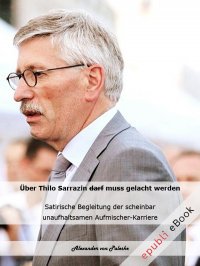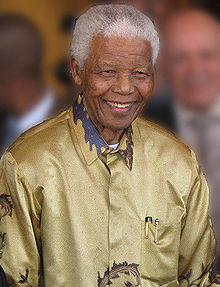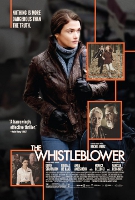A Meta-Group Managing Drugs, Violence, and the State
Saidov, Surikov, Muslim Insurrectionism, and Drug Trafficking / Part VIII
 Peter Dale Scott - Another example of Dunlop’s curtailment of Yasenev is his abridged description of “Mekhmet,” another attendee at the Beaulieu meeting, as a “certain Turk, in the past an advisor to the Islamicist premier of Turkey, [Necmettin] Erbakan.” (1) In the same year 1999, Erbakan reportedly arranged for both cash and arms to be sent to the Islamic Movement of Uzbekistan (IMU), a drug-trafficking group whose heroin reached Europe through Chechnya. (2) The IMU was backed not only by Turks but also by Pakistan’s ISI, who had also trained Shamil Basayev for the Chechnyan insurgency. For strategic reasons, ISI oversaw the spread of mujahedin and their narcotics from Afghanistan to Chechnya, a spread which as we have seen continued on into Kosovo.
Peter Dale Scott - Another example of Dunlop’s curtailment of Yasenev is his abridged description of “Mekhmet,” another attendee at the Beaulieu meeting, as a “certain Turk, in the past an advisor to the Islamicist premier of Turkey, [Necmettin] Erbakan.” (1) In the same year 1999, Erbakan reportedly arranged for both cash and arms to be sent to the Islamic Movement of Uzbekistan (IMU), a drug-trafficking group whose heroin reached Europe through Chechnya. (2) The IMU was backed not only by Turks but also by Pakistan’s ISI, who had also trained Shamil Basayev for the Chechnyan insurgency. For strategic reasons, ISI oversaw the spread of mujahedin and their narcotics from Afghanistan to Chechnya, a spread which as we have seen continued on into Kosovo.
In addition Yasenev links Mekhmet (“whose real name is Ruslan Saidov”) not only to Erbakan but also to the CIA, to Saudi intelligence, and to al-Qaeda:
In 2003 the Turkish citizen Mehmet whose real name is Ruslan Saidov, persuaded the President of the Chechen Republic, Ahmed Kadyrov, that he could be of use with Kadyrov’s policy of “national reconciliation.” Saidov took part in organizing Kadyrov’s visit to Saudi Arabia. There Kadyrov made an agreement with the head of Saudi intelligence, Prince Naif Ibn Abdel-Aziz, that the Arab militants under the Lieutenant Colonel Aziz ben Said ben Ali al Hamdi (alias Abu al Walid al-Hamadi), Prince Naif’s subordinate, would be removed from Chechnya by May 2004. The agreement stipulated that Kadyrov guaranteed safe passage to Abu al-Walid. Playing a double game and intending to set up both parties, Saidov (probably together with Abu al-Walid himself) gave this information to the CIA. Apparently the CIA was concerned that having left Chechnya the Arab militants would resurface in Iraq and join the terrorist group of the Jordanian Abu Musab al-Zarqawi that belongs to the al-Qaida network.
Trying to prevent this, and besides, wanting to discredit Kadyrov in the eyes of Prince Naif, the CIA gave Saidov an “assignment”. On April 13 in the Nozhai-Yurt district of Chechnya, Russian troops killed Abu al-Walid (or alleged having done so). Saidov paid $300,000 to those who carried out this operation. Their bosses in Moscow received $500,000. How much the CIA paid Saidov is unknown….
Yasenev describes Saidov as both a drug trafficker and an arms trafficker, involved with the supply of Russian arms to Yemen. He adds that, since the mid-1990s, “Saidov formed stable relations with the Saudi businessman Adnan Khashoggi, Prince Turki al-Faisal [then head of Saudi intelligence, now Saudi Ambassador in Washington] and Prince Naif [Saudi Interior Minister].”
Furthermore:
In the spring of 1995 Saidov began to cooperate with the organized society, led by Vladimir Filin and Alexei Likhvintsev in handling [narcotics] traffic through the port of Novorossiysk.
Saidov is described by Yasenev as having good relations not only with the CIA and Saudi intelligence, but also with both Turkish Islamists and even with Ayman al-Zawahiri, the man often described as both the “mastermind” behind 9/11 and the senior partner in al Qaeda active in the Balkans. (3)
In addition Yasenev described Saidov as not pro-Putin, but a Muslim activist who was passionately anti-Putin and indeed anti-Russian:
In September 2003, Saidov participated in the congress of the extremist organization Hizb ut-Tahrir al-Islami in Jordan. At this congress he announced that Hizb ut-Tahrir al-Islami was an organization effectively acting in the underground throughout Russia, Central Asia and the Crimea…. (4)
On December 8, 2004 Saidov addressed Muslim youth in Moscow. In his words, “following Ukraine, the Orange Revolution is coming to Russia.” “Our liberals say that in 2008 the situation in Moscow will be like the one in Kiev.” However, everything will be different, and not in 2008, but earlier.” “Amirs and mudjahideen will soon make the Kremlin shudder with horror.” In 2005, “they will throw into hell the servant of Satan,” i.e., President Putin, who is allegedly “wanted by the International Tribunal at The Hague.” (5)
The same goal of Muslim liberation was attributed by Yasenev to the organizer of the Beaulieu meeting, Anton Surikov:
On December 13 2004, in Adygeia, Surikov had a meeting with a group of Sufi believers and said this: “In the past we were against ahl-ad-dalala (those who gone astray) with their Arab money. We used to say that one should not separate from Russia. But now “Russia is on the brink of collapse and chaos.” So “we’ll be separating [from Russia] with all Muslims of the Caucasus.” A new state will be created on our historical lands from Psou and the Black Sea to Laba and Kuban.” (6)
The portraits of Saidov’s and Surikov’s connections with al-Zawahiri, Erbakan, and Hizb ut-Tahrir reinforce the thesis that the “Pristina dash” aimed at facilitating drug flows to strengthen Islamism in the Balkans. They also confirm the criticism, by the Indian analyst B. Raman and others, that American studies of Islamism and jihadism err in their restrictive focus on al-Qaeda. (7) The full range of Islamic jihadism is far more complex.
It appears that Russia and America, believing that they can use Islamist traffickers as assets, are also in fact being used by them.
 Footnotes:
Footnotes:
1: Dunlop, “Storm in Moscow,” 42. Dunlop’s important and truncated description of Mekhmet has a strange and irrelevant citation: “On Erbakan, see Shireen T. Hunter, Islam in Russia: The Politics of Identity and Security (Armonk, NY: M.E. Sharpe, 2004), p. 365.” But there is no need to identify Erbakan, and Hunter is silent about Mekhmet.
2: Napoleoni, Terror Incorporated, 91: “It was partly thanks to [IMU leader] Namangiani’s contacts in Chechnya that heroin reached Europe. According to Interpol, about 60 percent of exported Afghan narcotics in 2002 passed through Central Asia. The IMU controlled 70 percent of the opium that moved through this area.”
3: “For the past 10 years…Ayman al-Zawahiri has operated terrorist training … and drug-trading networks throughout Albania, Kosovo, Macedonia, Bulgaria, Turkey and Bosnia” (Wall Street Journal, 11/1/01). Cf. Independent (London), 8/5/05.
4: “Russia is also concerned about the HT [Hizb ut-Tahrir al-Islami], for it fears that the movement will spread to Muslim regions of Russia. Russian intelligence is now collaborating closely with the Central Asian states to combat the HT” (Ahmed Rashid, Jihad: The Rise of Militant Islam in Central Asia [New Haven: Yale UP, 2002], 132). Cf. Surikov statement to Sufis below. Rashid regards the Hizb ut-Tahrir as essentially non-violent, but others have seen it as a target for terrorist recruitment by Osama bin Laden. Cf. Bakhram Tursunov, “Extremism in Uzbekistan,” Conflict Studies Research Centre, 12, “It should also be noted that bin Laden’s scheme, under which the unification of all extremist forces and movements in the cause of establishing a caliphate was supposed to occur, also envisaged sponsoring activities inside the Islamic underground in states selected by him as appropriate subjects for his efforts. The religious and political movement Hizb-ut-Takhrir, widespread in the countries of Central Asia and among Muslim minorities in China, can quite justifiably be regarded as one of the underground movements.”
5: The goal of splitting up Russia, attributed here to Surikov, is that which, in an earlier text co-authored by Surikov, is attributed by Russian “radicals” to the United States (Graeme Herd with Ene Rôngelep and Anton Surikov, Crisis for Estonia? Russia, Estonia and a Post-Chechen Cold War [London: Brassey’s for the Centre for Defence Studies, 1994], 33).
6: Surikov, like Saidov, may not be Russian. A recent article refers to “Ret. Colonel Anton Surikov (Turkish citizen Mansur Natkhoev) and Ret. Major Ruslan Saidov (Turkish citizen Ugur Mehmed)” (Andrei Petrov and Valentin Zorin, Academician Anton Surikov Confirms Professor Peter Dale Scott's "Prishtina Dash".
7: Cf. B. Raman, “Istanbul: The enemy within,” Asia Times, 11/22/03, In this essay Raman shows the direct links between Turkish terrorists (former disciples of Erbakan) and groups like Lashkar-e-Toiba sponsored by Pakistan’s ISI.
 Part I: History and the Political Requirements of the Global Drug Traffic
Part I: History and the Political Requirements of the Global Drug Traffic
 Part II: The Meta-Group, West, and East
Part II: The Meta-Group, West, and East
 Part III: The Meta-Group, BCCI, and Adnan Khashoggi
Part III: The Meta-Group, BCCI, and Adnan Khashoggi
 Part IV: Dunlop’s Account of the Beaulieu Meeting’s Purpose: The “Russian 9/11” in 1999
Part IV: Dunlop’s Account of the Beaulieu Meeting’s Purpose: The “Russian 9/11” in 1999
 Part V: Dunlop’s Redactions of His Source Yasenev
Part V: Dunlop’s Redactions of His Source Yasenev
 Part VI: The Khashoggi Villa Meeting, Kosovo, and the “Pristina Dash”
Part VI: The Khashoggi Villa Meeting, Kosovo, and the “Pristina Dash”
 Part VII: The Role of Anton Surikov: The Dunlop and Yasenev Versions
Part VII: The Role of Anton Surikov: The Dunlop and Yasenev Versions
 Part VIII: Saidov, Surikov, Muslim Insurrectionism, and Drug Trafficking
Part VIII: Saidov, Surikov, Muslim Insurrectionism, and Drug Trafficking
 Part IX: Allegations of Drug-Trafficking and Far West Ltd.
Part IX: Allegations of Drug-Trafficking and Far West Ltd.
 Part X: Far West Ltd, Halliburton, Diligence LLC, New Bridge, and Neil Bush
Part X: Far West Ltd, Halliburton, Diligence LLC, New Bridge, and Neil Bush
 Part XI: The U.S. Contribution to the Afghan-Kosovo Drug Traffic.
Part XI: The U.S. Contribution to the Afghan-Kosovo Drug Traffic.
 Last Part XII: Concluding Remarks: Meta-Groups and Transpolitics.
Last Part XII: Concluding Remarks: Meta-Groups and Transpolitics.
 Peter Dale Scott, a former Canadian diplomat and English Professor at the University of California, Berkeley, is a poet, writer, and researcher.
Peter Dale Scott, a former Canadian diplomat and English Professor at the University of California, Berkeley, is a poet, writer, and researcher.
In addition Yasenev links Mekhmet (“whose real name is Ruslan Saidov”) not only to Erbakan but also to the CIA, to Saudi intelligence, and to al-Qaeda:
In 2003 the Turkish citizen Mehmet whose real name is Ruslan Saidov, persuaded the President of the Chechen Republic, Ahmed Kadyrov, that he could be of use with Kadyrov’s policy of “national reconciliation.” Saidov took part in organizing Kadyrov’s visit to Saudi Arabia. There Kadyrov made an agreement with the head of Saudi intelligence, Prince Naif Ibn Abdel-Aziz, that the Arab militants under the Lieutenant Colonel Aziz ben Said ben Ali al Hamdi (alias Abu al Walid al-Hamadi), Prince Naif’s subordinate, would be removed from Chechnya by May 2004. The agreement stipulated that Kadyrov guaranteed safe passage to Abu al-Walid. Playing a double game and intending to set up both parties, Saidov (probably together with Abu al-Walid himself) gave this information to the CIA. Apparently the CIA was concerned that having left Chechnya the Arab militants would resurface in Iraq and join the terrorist group of the Jordanian Abu Musab al-Zarqawi that belongs to the al-Qaida network.
Trying to prevent this, and besides, wanting to discredit Kadyrov in the eyes of Prince Naif, the CIA gave Saidov an “assignment”. On April 13 in the Nozhai-Yurt district of Chechnya, Russian troops killed Abu al-Walid (or alleged having done so). Saidov paid $300,000 to those who carried out this operation. Their bosses in Moscow received $500,000. How much the CIA paid Saidov is unknown….
Yasenev describes Saidov as both a drug trafficker and an arms trafficker, involved with the supply of Russian arms to Yemen. He adds that, since the mid-1990s, “Saidov formed stable relations with the Saudi businessman Adnan Khashoggi, Prince Turki al-Faisal [then head of Saudi intelligence, now Saudi Ambassador in Washington] and Prince Naif [Saudi Interior Minister].”
Furthermore:
In the spring of 1995 Saidov began to cooperate with the organized society, led by Vladimir Filin and Alexei Likhvintsev in handling [narcotics] traffic through the port of Novorossiysk.
Saidov is described by Yasenev as having good relations not only with the CIA and Saudi intelligence, but also with both Turkish Islamists and even with Ayman al-Zawahiri, the man often described as both the “mastermind” behind 9/11 and the senior partner in al Qaeda active in the Balkans. (3)
In addition Yasenev described Saidov as not pro-Putin, but a Muslim activist who was passionately anti-Putin and indeed anti-Russian:
In September 2003, Saidov participated in the congress of the extremist organization Hizb ut-Tahrir al-Islami in Jordan. At this congress he announced that Hizb ut-Tahrir al-Islami was an organization effectively acting in the underground throughout Russia, Central Asia and the Crimea…. (4)
On December 8, 2004 Saidov addressed Muslim youth in Moscow. In his words, “following Ukraine, the Orange Revolution is coming to Russia.” “Our liberals say that in 2008 the situation in Moscow will be like the one in Kiev.” However, everything will be different, and not in 2008, but earlier.” “Amirs and mudjahideen will soon make the Kremlin shudder with horror.” In 2005, “they will throw into hell the servant of Satan,” i.e., President Putin, who is allegedly “wanted by the International Tribunal at The Hague.” (5)
The same goal of Muslim liberation was attributed by Yasenev to the organizer of the Beaulieu meeting, Anton Surikov:
On December 13 2004, in Adygeia, Surikov had a meeting with a group of Sufi believers and said this: “In the past we were against ahl-ad-dalala (those who gone astray) with their Arab money. We used to say that one should not separate from Russia. But now “Russia is on the brink of collapse and chaos.” So “we’ll be separating [from Russia] with all Muslims of the Caucasus.” A new state will be created on our historical lands from Psou and the Black Sea to Laba and Kuban.” (6)
The portraits of Saidov’s and Surikov’s connections with al-Zawahiri, Erbakan, and Hizb ut-Tahrir reinforce the thesis that the “Pristina dash” aimed at facilitating drug flows to strengthen Islamism in the Balkans. They also confirm the criticism, by the Indian analyst B. Raman and others, that American studies of Islamism and jihadism err in their restrictive focus on al-Qaeda. (7) The full range of Islamic jihadism is far more complex.
It appears that Russia and America, believing that they can use Islamist traffickers as assets, are also in fact being used by them.
1: Dunlop, “Storm in Moscow,” 42. Dunlop’s important and truncated description of Mekhmet has a strange and irrelevant citation: “On Erbakan, see Shireen T. Hunter, Islam in Russia: The Politics of Identity and Security (Armonk, NY: M.E. Sharpe, 2004), p. 365.” But there is no need to identify Erbakan, and Hunter is silent about Mekhmet.
2: Napoleoni, Terror Incorporated, 91: “It was partly thanks to [IMU leader] Namangiani’s contacts in Chechnya that heroin reached Europe. According to Interpol, about 60 percent of exported Afghan narcotics in 2002 passed through Central Asia. The IMU controlled 70 percent of the opium that moved through this area.”
3: “For the past 10 years…Ayman al-Zawahiri has operated terrorist training … and drug-trading networks throughout Albania, Kosovo, Macedonia, Bulgaria, Turkey and Bosnia” (Wall Street Journal, 11/1/01). Cf. Independent (London), 8/5/05.
4: “Russia is also concerned about the HT [Hizb ut-Tahrir al-Islami], for it fears that the movement will spread to Muslim regions of Russia. Russian intelligence is now collaborating closely with the Central Asian states to combat the HT” (Ahmed Rashid, Jihad: The Rise of Militant Islam in Central Asia [New Haven: Yale UP, 2002], 132). Cf. Surikov statement to Sufis below. Rashid regards the Hizb ut-Tahrir as essentially non-violent, but others have seen it as a target for terrorist recruitment by Osama bin Laden. Cf. Bakhram Tursunov, “Extremism in Uzbekistan,” Conflict Studies Research Centre, 12, “It should also be noted that bin Laden’s scheme, under which the unification of all extremist forces and movements in the cause of establishing a caliphate was supposed to occur, also envisaged sponsoring activities inside the Islamic underground in states selected by him as appropriate subjects for his efforts. The religious and political movement Hizb-ut-Takhrir, widespread in the countries of Central Asia and among Muslim minorities in China, can quite justifiably be regarded as one of the underground movements.”
5: The goal of splitting up Russia, attributed here to Surikov, is that which, in an earlier text co-authored by Surikov, is attributed by Russian “radicals” to the United States (Graeme Herd with Ene Rôngelep and Anton Surikov, Crisis for Estonia? Russia, Estonia and a Post-Chechen Cold War [London: Brassey’s for the Centre for Defence Studies, 1994], 33).
6: Surikov, like Saidov, may not be Russian. A recent article refers to “Ret. Colonel Anton Surikov (Turkish citizen Mansur Natkhoev) and Ret. Major Ruslan Saidov (Turkish citizen Ugur Mehmed)” (Andrei Petrov and Valentin Zorin, Academician Anton Surikov Confirms Professor Peter Dale Scott's "Prishtina Dash".
7: Cf. B. Raman, “Istanbul: The enemy within,” Asia Times, 11/22/03, In this essay Raman shows the direct links between Turkish terrorists (former disciples of Erbakan) and groups like Lashkar-e-Toiba sponsored by Pakistan’s ISI.
sfux - 5. Sep, 08:01 Article 9982x read
















































